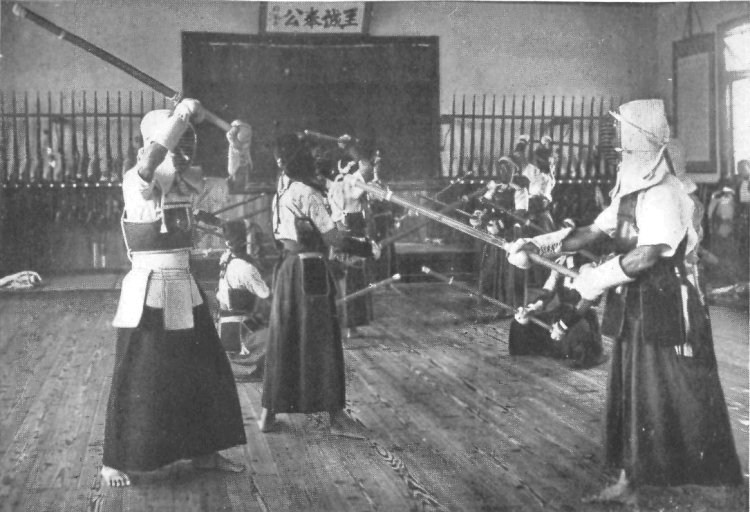剣道 Way of the Sword
 Kendo, which means “way of the sword“, is not just one of Japan’s oldest martial arts, but the one most closely associated with the Samurai. Kendo has evolved from the deadly form of swordsmanship that we have seen immortalized in the action movies of Akira Kurosawa, into a popular and highly competitive sport enjoyed by thousands of men and women worldwide.
Kendo, which means “way of the sword“, is not just one of Japan’s oldest martial arts, but the one most closely associated with the Samurai. Kendo has evolved from the deadly form of swordsmanship that we have seen immortalized in the action movies of Akira Kurosawa, into a popular and highly competitive sport enjoyed by thousands of men and women worldwide.
What exactly is Kendo?
Kendo is a Japanese style of fencing derived during the Meiji period in Japan (1868-1912), from the two-handed sword fighting techniques of the samurai. Today Kendo is practiced with shinai (bamboo swords), and fighters wear protective equipment covering the target areas: the head, wrists, and abdomen. The bogu (protective gear) consists of a men (face mask), a do (breastplate), kote (fencing gloves), and the tare, a kind of apron to protect the stomach and hips. Under the protective gear, kendoka (students of Kendo) wear a hakama, or wide split skirt, reaching the ankles.The weapon used in Kendo is the shinai, or bamboo sword. The shinai is approximately four feet in length and is made of four carefully formed bamboo slats bound together to form hollow cylinder. A cord runs along the length of the shinai. To make a valid cut a player must strike his opponent with the side opposite the cord. In addition the point must be struck with the top third of the shina.
Why practice Kendo?
Kendo has been practiced for different reasons throughout the various stages in its development, depending on the prevailing social attitudes of the day. While we will all have our own personal reasons for taking up Kendo, the current aim of Kendo is to form a rounded human being, incorporating physical, spiritual, and social development through vigorous keiko (practice). In Japan there are over four million people practicing Kendo today with this purpose in mind.In modern Kendo strikes are executed on a previously determined target in order to be awarded points, so Kendo can be easily regarded as of a modern sport. It is important, however, to retain the true spirit of Kendo during keiko, a spirit which has survived through centuries of unbroken tradition. The original motto of Kendo was “Victory means survival, defeat means death”. Although it would be silly to take this saying literally in today’s day and age, we must go into practice with the spirit behind this motto in mind.
